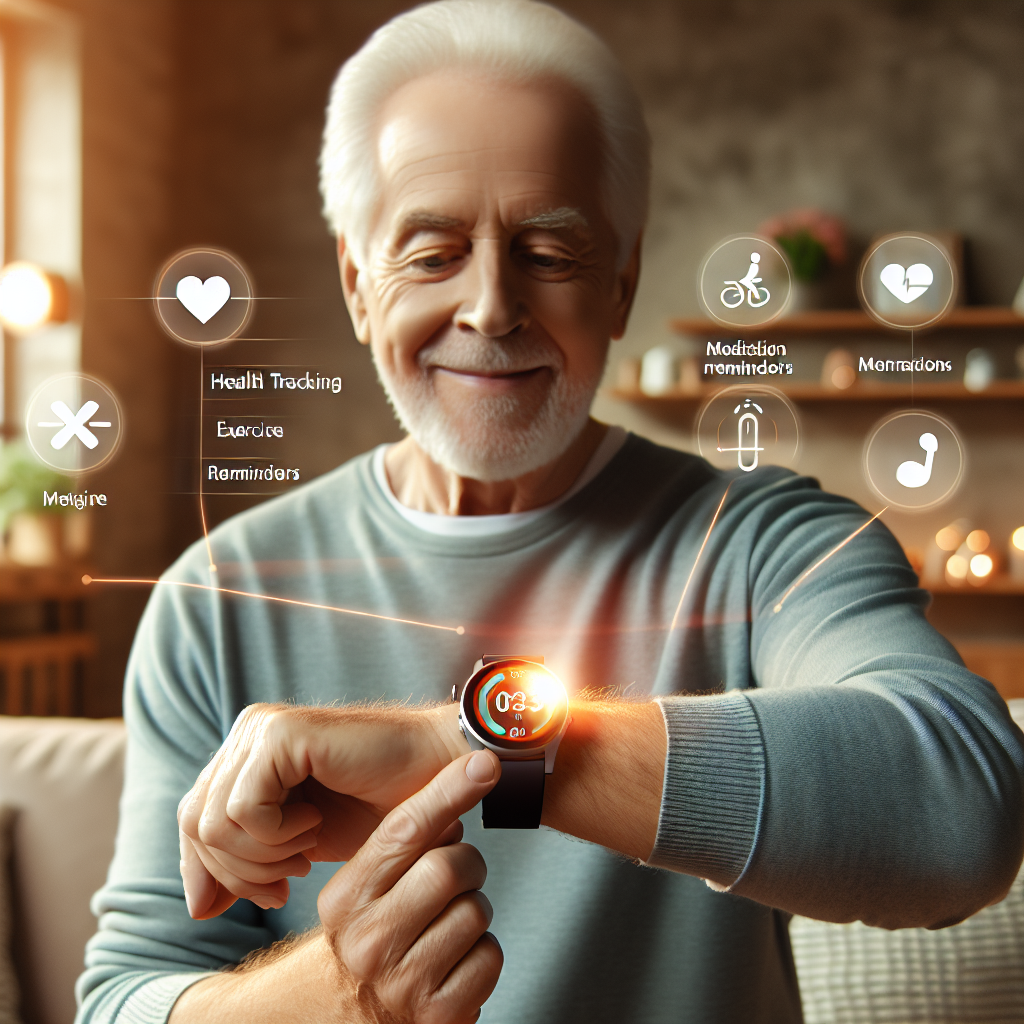Remember when learning meant sitting in a classroom with textbooks? Those days are long gone, especially for today’s active seniors. Virtual reality in education is creating exciting new possibilities for older adults who want to keep their minds sharp and their lives interesting—all from the comfort of home.
Imagine putting on a headset and suddenly standing atop the Eiffel Tower, walking through ancient Rome, or joining a classroom filled with fellow learners from across the globe. This isn’t science fiction; it’s the reality that virtual reality technology is bringing to seniors everywhere.
Opening New Doors Through Technology
Virtual reality (VR) has evolved from a gaming novelty into a powerful educational tool. For seniors, this technology offers more than entertainment—it provides a gateway to continued learning and exploration during retirement years. VR creates fully immersive, three-dimensional environments that users can interact with, making learning more engaging and memorable than traditional methods.
What makes virtual reality in education particularly valuable for seniors is its accessibility. Many older adults face mobility challenges or live in areas without easy access to educational institutions. VR removes these barriers, bringing rich learning experiences directly to them.
“I never thought I’d visit the Louvre at my age,” says Martha, 78, a retired nurse from Colorado. “But last week, I spent an afternoon examining the brushstrokes of Monet paintings up close through my grandson’s VR headset. It felt like I was really there.”
The Benefits Beyond Learning
The advantages of virtual reality in education extend far beyond knowledge acquisition for seniors. One of the most significant benefits is its power to combat loneliness—a serious concern for many older adults.
Creating Connections in Virtual Spaces
Loneliness affects approximately 43% of adults aged 60 and older, according to recent studies. VR offers a solution by connecting seniors with others in virtual environments where they can interact, collaborate, and build relationships regardless of physical location.
Virtual classrooms, discussion groups, and shared experiences create opportunities for meaningful social interaction. Seniors can meet people with similar interests from around the world, expanding their social circles without leaving home.
Frank, an 82-year-old retired accountant, participates in a weekly virtual book club through VR. “I’ve made friends from Australia to Alaska,” he shares. “We discuss literature in a virtual library setting that feels remarkably real. These people have become genuine friends, even though we’ve never met in person.”
Enhancing Well-being Through Exploration
Virtual reality in education also contributes to improved mental health for seniors. The stimulation of exploring new environments and learning new concepts keeps minds active and engaged, potentially reducing the risk of cognitive decline.
Research indicates that VR experiences can trigger the release of dopamine—the “feel-good” neurotransmitter associated with pleasure and satisfaction. For seniors experiencing depression or anxiety, these positive emotions can provide welcome relief and improved outlook.
Consider the experience of Doris, 75, who uses VR to manage her chronic pain. “When I’m immersed in a virtual tour of the Grand Canyon, I’m so focused on the beauty around me that I notice my pain less,” she explains. “It’s like a mini-vacation for my mind, and I come back feeling refreshed.”
Adventures Without Risk
For adventure-seeking seniors, virtual reality in education offers thrilling experiences without physical risk. Users can go scuba diving in coral reefs, climb Mount Everest, or explore dense rainforests—activities that might be physically challenging or impossible in real life.
These virtual adventures satisfy the desire for new experiences while keeping users safe. They provide the excitement of exploration without concerns about falls, injuries, or overtaxing physical limitations.
“I always wanted to see Antarctica,” says Robert, 79, who uses a wheelchair. “Last month, I took a virtual expedition there. I watched penguins waddle across ice floes and felt the vastness of the landscape. It was exhilarating, and I didn’t have to worry about the cold or the difficult terrain.”
Lifelong Learning Reimagined
Virtual reality is transforming lifelong learning for retirees by making education more accessible, engaging, and tailored to individual interests. The retirement years often bring time freedom that wasn’t available during working years—perfect for pursuing interests that had to be set aside during busier times.
Virtual Classrooms and Workshops
Educational institutions worldwide are developing VR courses specifically designed for older learners. These range from academic subjects like history and literature to practical skills like cooking, gardening, or painting.
Virtual reality in education allows for interactive learning experiences that traditional online courses can’t match. Instead of watching a video about Renaissance art, seniors can walk through a virtual Sistine Chapel. Rather than reading about marine biology, they can dive beneath the waves to observe sea creatures in their natural habitats.
Helen, 72, recently completed a VR course on ancient Egyptian civilization. “We didn’t just learn about the pyramids—we explored them,” she says. “Our instructor took us through narrow passages and into burial chambers while explaining the hieroglyphics on the walls. I remember every detail because I experienced it, not just heard about it.”
Pursuing Passions and Developing Skills
Retirement offers the perfect opportunity to develop new skills or revisit interests from years past. Virtual reality makes this pursuit more accessible and enjoyable.
Want to learn to play the piano? VR applications can guide hand movements on virtual keyboards. Interested in woodworking? Practice techniques in a virtual workshop before investing in expensive tools. Curious about astronomy? Explore the cosmos from your living room.
Richard, 80, always wanted to learn sculpture but worried about the physical demands and mess. “With VR, I can create virtual clay sculptures using hand controllers that mimic real sculpting tools,” he explains. “The program even simulates the resistance of actual clay. I’ve created dozens of pieces, and my arthritis doesn’t flare up like it would with physical clay.”
Learning Communities for Shared Growth
One of the most powerful aspects of virtual reality in education for seniors is the formation of learning communities. These virtual spaces bring together people with shared interests, creating opportunities for collaboration, discussion, and mutual support.
Language learners can practice conversation in simulated environments that replicate the countries where those languages are spoken. History enthusiasts can debate interpretations of events while standing in virtual recreations of historic settings. Book lovers can discuss literature in atmospheric virtual libraries or settings from the books themselves.
These communities foster not just learning but also friendship, purpose, and belonging—crucial elements for wellbeing in later life.
The Science Behind the Experience
The benefits of virtual reality in education for seniors aren’t just anecdotal—they’re backed by research. Studies consistently show that immersive learning experiences lead to better retention and understanding compared to traditional methods.
A groundbreaking Stanford University study found that nearly 80% of seniors reported a more positive outlook after participating in VR sessions. About 60% experienced a noticeable reduction in feelings of social isolation. The immersive nature of VR seems to create stronger emotional connections to the material, making learning more meaningful and memorable.
Neurological research suggests that the multi-sensory stimulation provided by virtual reality in education may help maintain cognitive function. When the brain processes information through multiple channels—visual, auditory, and spatial—neural pathways are strengthened, potentially offsetting some age-related cognitive changes.
Dr. Sarah Mendez, a gerontologist specializing in technology and aging, explains: “Virtual reality engages the brain in unique ways. The immersive nature of VR creates presence—the feeling of actually being somewhere else. This sense of presence triggers emotional and cognitive responses similar to real-world experiences, making learning more effective and enjoyable for older adults.”
Additionally, the interactive nature of VR learning helps maintain attention spans that might otherwise wander during traditional lectures or readings. Users become active participants rather than passive recipients of information, increasing engagement and enjoyment.
Embracing a New Chapter of Discovery
At SilverSmart, we believe that retirement represents not an ending but the beginning of life’s most fulfilling chapter. Virtual reality in education perfectly aligns with our philosophy that each new pursuit enriches one’s life story, creating a more complete and fulfilling life experience.
The combination of accumulated wisdom with newfound time freedom creates unlimited possibilities for personal growth—possibilities that VR technology helps unlock. By removing physical barriers and opening doors to endless learning opportunities, virtual reality enables seniors to continue their journey of self-discovery and personal fulfillment.
“What excites me most about virtual reality for seniors is how it transforms limitations into opportunities,” says Lisa Chen, a digital learning specialist at SilverSmart. “Someone who can no longer travel physically can still experience the wonder of exploring new places. Someone who feels isolated can connect with like-minded individuals worldwide. VR doesn’t just provide entertainment—it expands horizons and enriches lives.”
This technology also supports our belief in the positive intergenerational impact of continuous learning. Seniors who embrace virtual reality often find themselves sharing these experiences with younger family members, creating unique bonding opportunities and challenging stereotypes about older adults and technology.
As we at SilverSmart continue to explore innovative solutions that address not just the physical needs of retirees but their deeper search for purpose and meaning, virtual reality stands out as a powerful tool for transformation. It allows seniors to harness their potential by discovering new interests, developing skills, building vibrant communities, and continuing to contribute their rich life experiences to society.
Virtual reality in education isn’t just changing how seniors learn—it’s changing how they live, connect, and find fulfillment in their golden years. By opening doors to new worlds without ever leaving home, VR technology is helping redefine retirement as a time of adventure, growth, and unlimited possibilities.
The journey of discovery doesn’t end with retirement—in many ways, it’s just beginning. And with tools like virtual reality, that journey can be more accessible, engaging, and rewarding than ever before.

